For the purposes of our SD 2030 Strategy and SD reporting, materiality is defined as any factor that has a present or future impact on our ability to achieve our SD vision.
We believe that balancing internal and external viewpoints is critical to defining and managing SD issues that are significantly relevant to our business and our stakeholders.
Our Stakeholder Engagement Approach
Communication and engagement with our employees, investors, tenants, customers, suppliers, regulators, NGOs, community representatives, and many others is an integral part of our daily operations, as set out in our SD 2030 Strategy.
We regularly engage with our stakeholders so that we can understand their priorities, expectations and perceptions regarding SD issues.
When we first introduced our SD 2030 Strategy in 2016, we engaged extensively with senior managers and employees from across our business and also consulted external sustainability experts. Today, our SD Communication and Engagement Committee continues to gather the support of our employees and other stakeholders so as to further integrate our SD 2030 Strategy across our business.
Our Stakeholders
Stakeholder Groups and Methods of Engagement

- Surveys and interviews
- Intranet and staff newsletter CornerStone
- Training sessions
- Competitions and team-building activities
- Forums
- Staff townhalls
- “WeChat Work” mobile application

- Community events
- Joint projects
- Working committees and consultations
- Multi-stakeholder meetings/seminars on specific issues

- SD-themed tenant engagement programmes
- Joint projects
- Community events
- Surveys and interviews
- Multi-stakeholder meetings/seminars on specific issues

- Surveys
- Customer service mobile applications
- Community events
- Joint projects

- Supplier screening and assessments
- Joint projects
- Surveys
- Forums

- Joint projects
- Working committees and consultations
- Interviews

- Joint projects/research funds
- Multi-stakeholder forums and partnerships
- Seminars

- Surveys and interviews
- Multi-stakeholder meetings/seminars on specific issues
- Joint projects

- SD benchmarks and indices
- Interviews and meetings
- Newsletters
- Events
- Investor Day

- Annual gathering
- Interviews
- Feedback and responses to media enquiries
Stakeholder-driven Materiality
We conducted a materiality review in 2017/18 by carrying out surveys of more than 300 stakeholders as well as 22 in-depth stakeholder interviews. The materiality matrix set out below reflects the findings from that materiality review.
The materiality matrix maps 27 SD issues, with their importance to external stakeholders appearing on the y-axis and their importance to our business continuity and development on the x-axis. Overall materiality was determined by the aggregate score assigned to each SD issue by our internal and external stakeholders.
Materiality Matrix
Please select (single option):
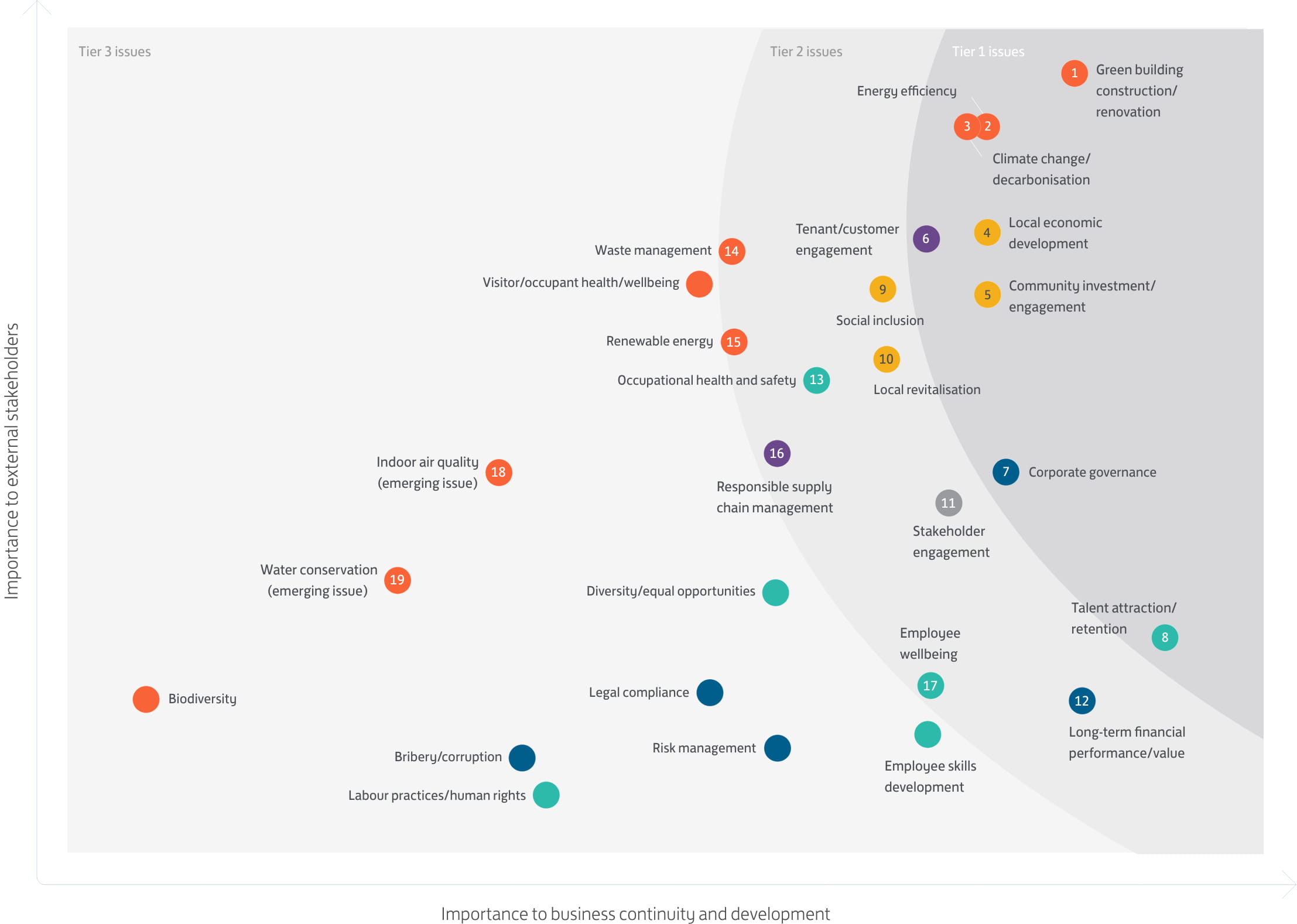
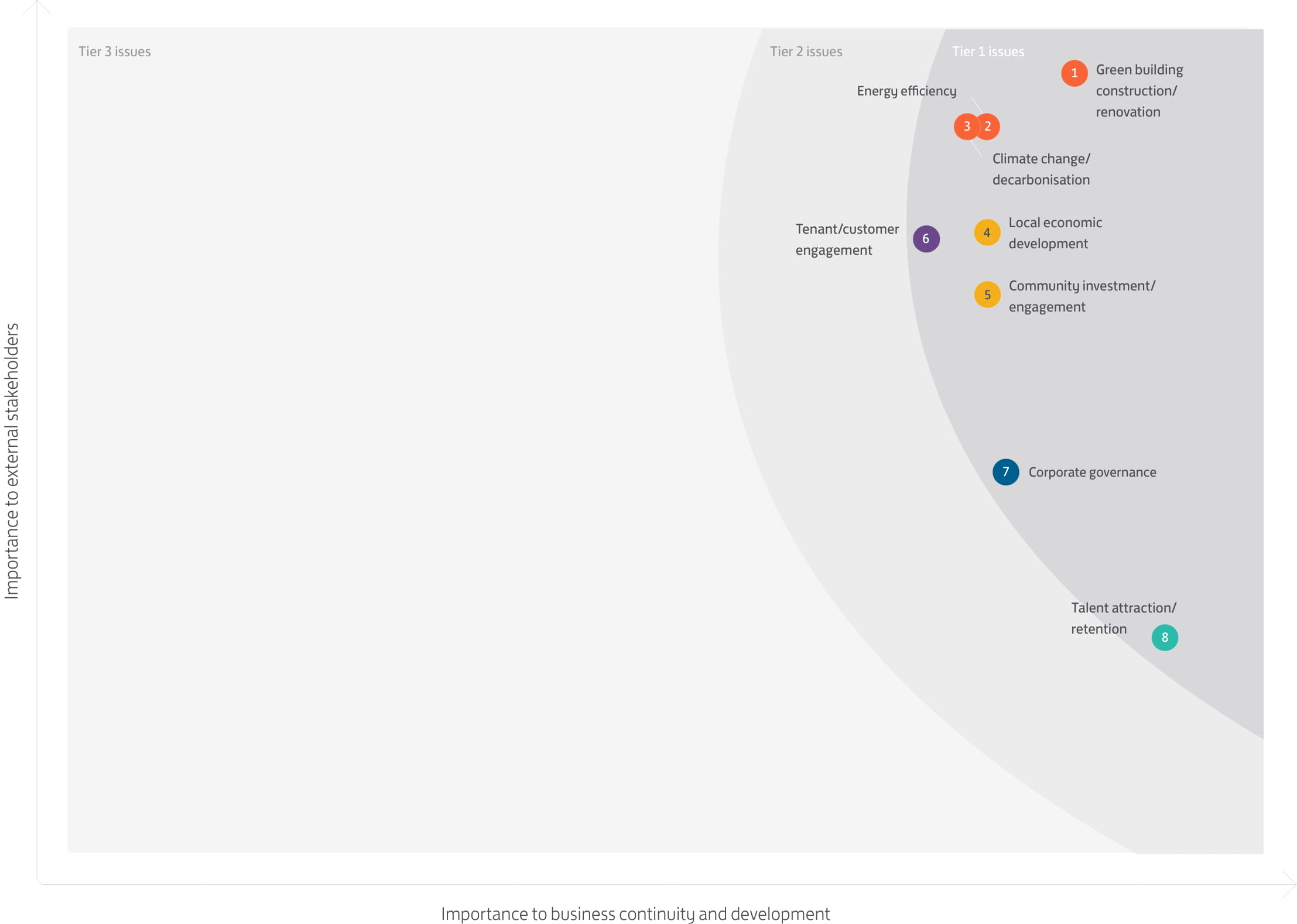
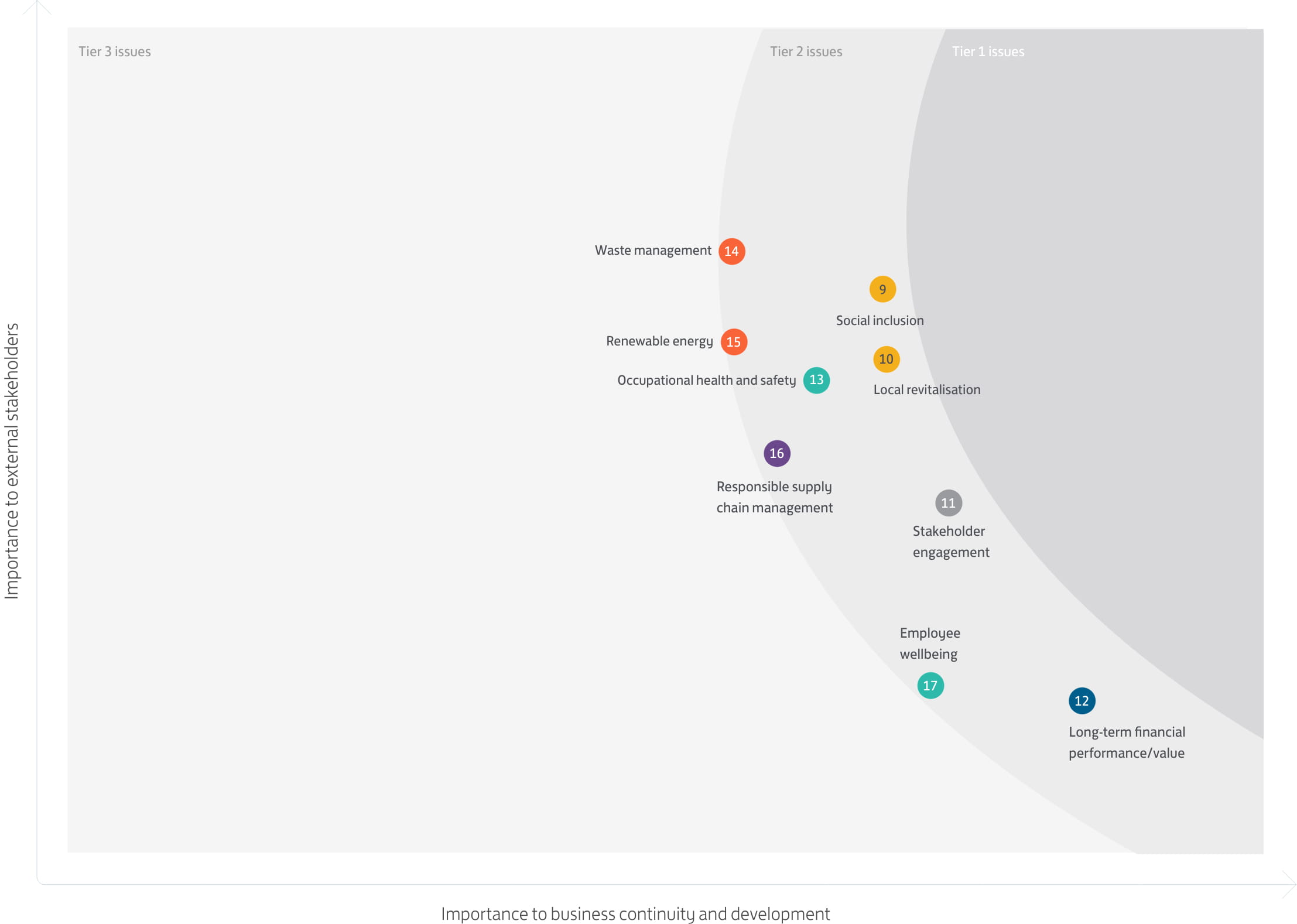
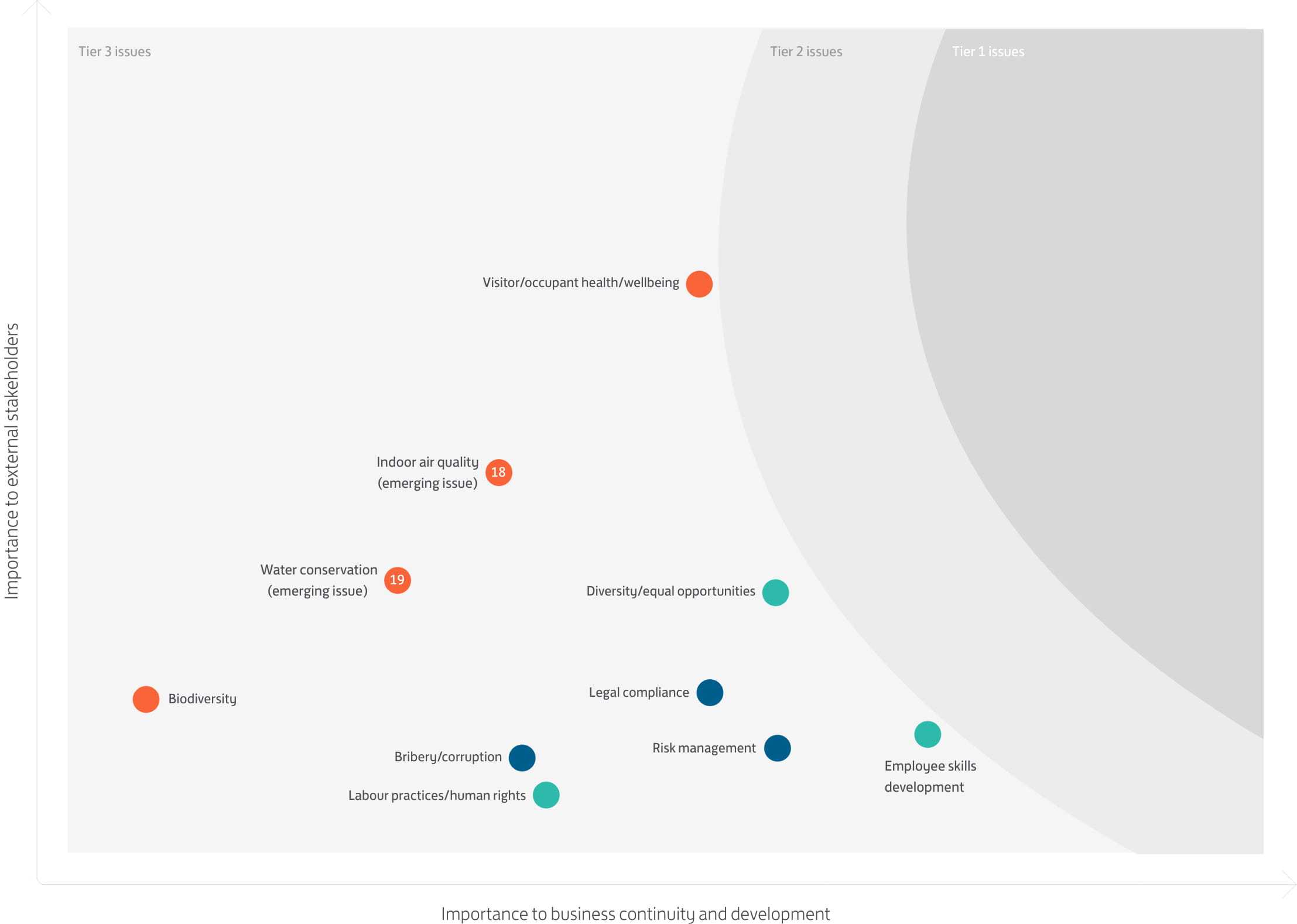
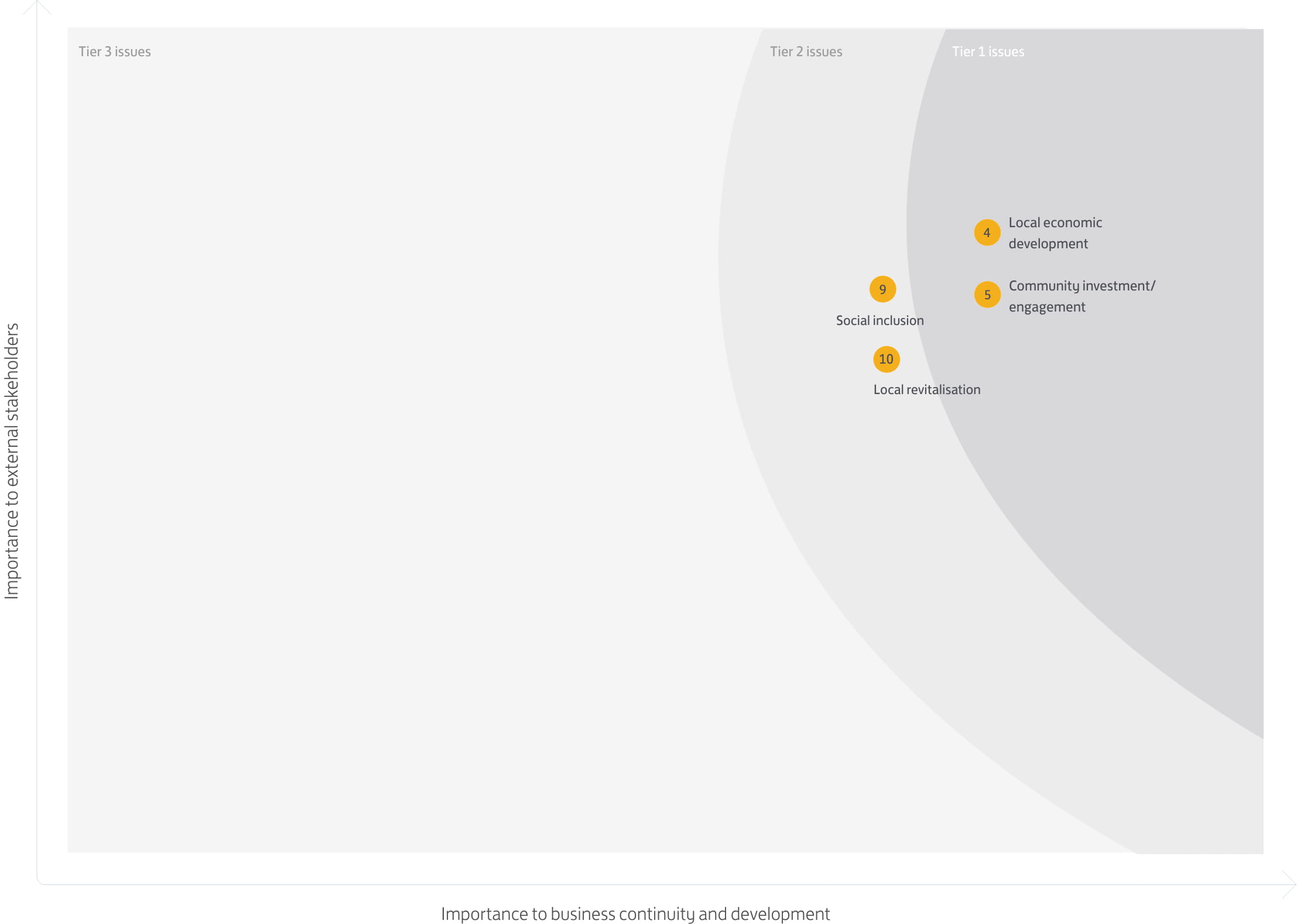
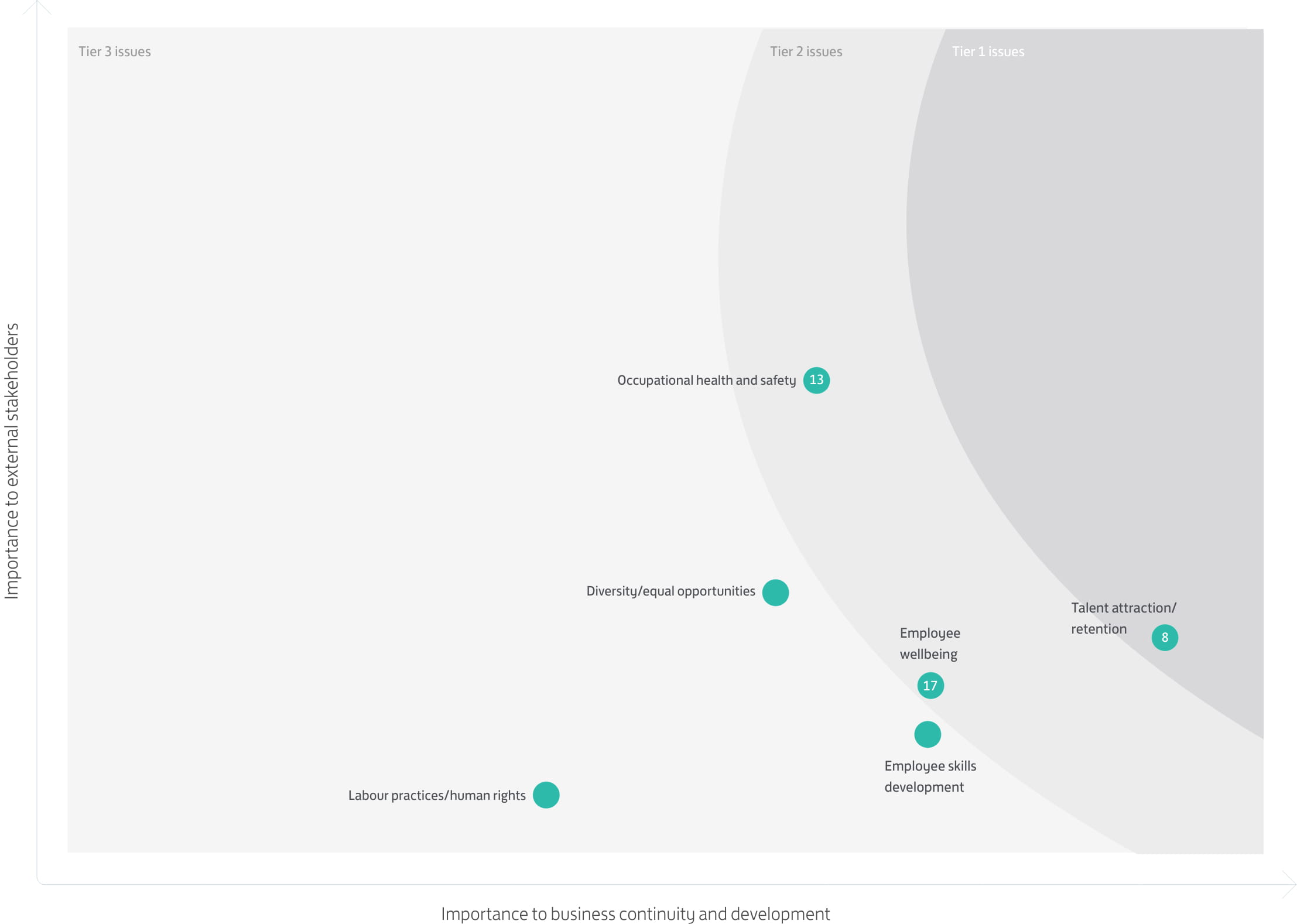
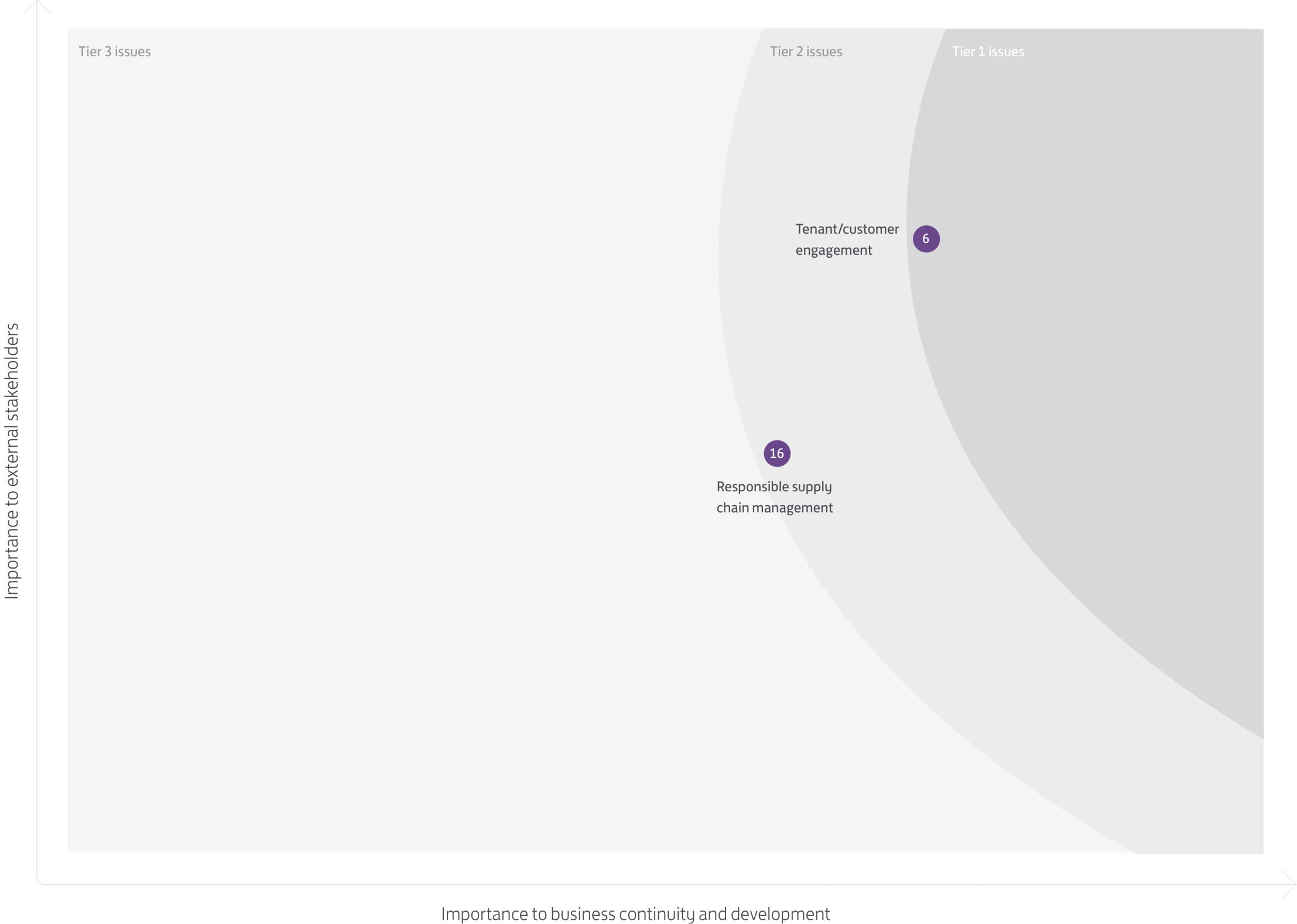

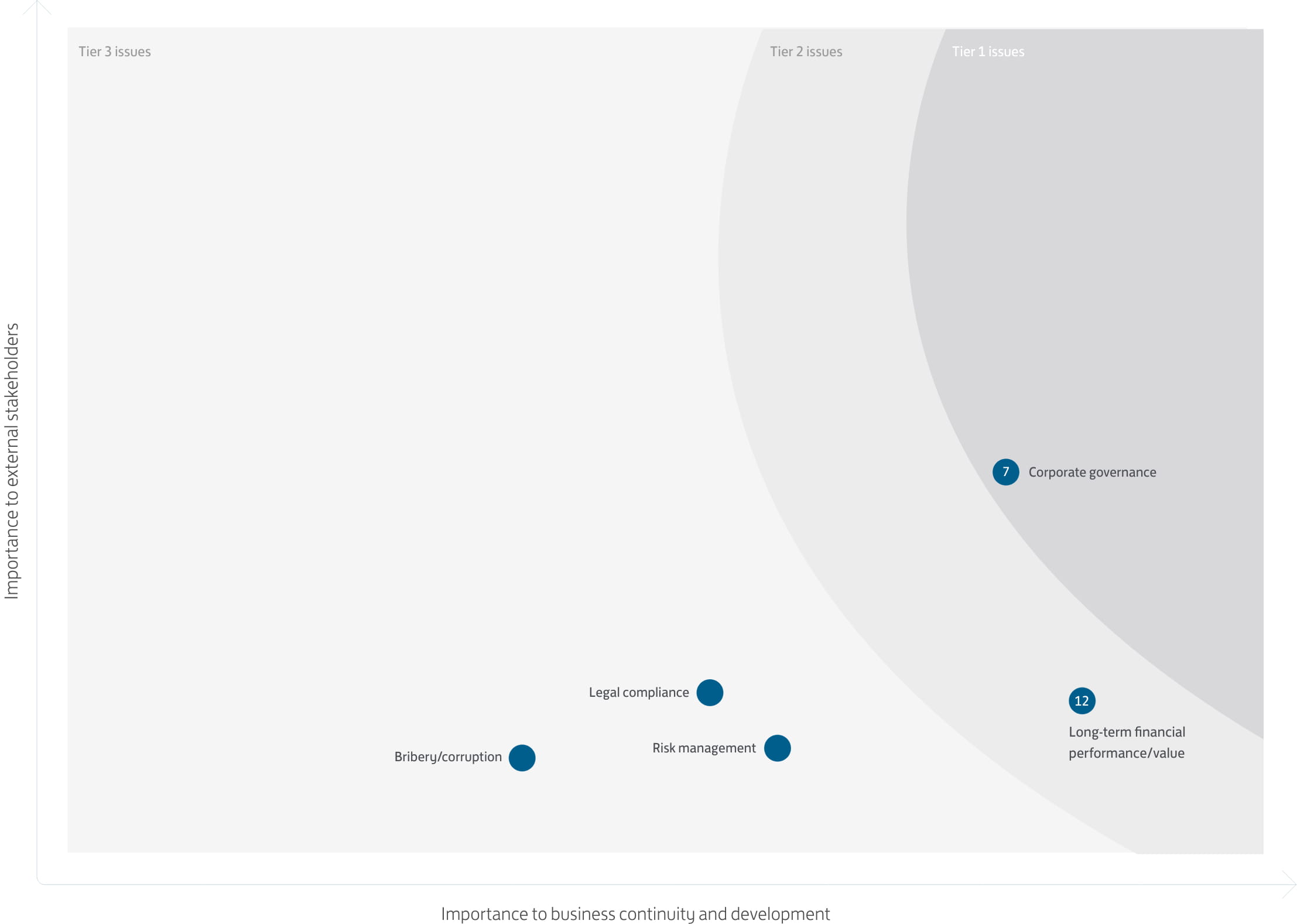
Top Material Issues
The top material issues in the matrix, namely Tier 1 and Tier 2 issues, are consistent with the focus areas of our SD 2030 Strategy and have been addressed in this report in accordance with the relevant Global Reporting Initiative Standards (“GRI Standards”).
As summarised in the following table, the content of this report also reflects additional emerging issues that are the subject of increasing public and regulatory attention, such as indoor air quality and water conservation.
| Material Issues | SD 2030 Strategy Focus Areas | GRI Standards | Impacts and Boundaries | ||||||||||
|---|---|---|---|---|---|---|---|---|---|---|---|---|---|
Employee Groups | Community/NGOs | Suppliers | Tenants | Consumers/Customers | Regulators/Government | Joint Venture Partners | Ind. Experts/Academia | Shareholders/Investors | Media | ||||
Green building construction / renovation
| GRI 417 Marketing and Labelling (2016) | ||||||||||||
Energy efficiency
| GRI 302 Energy (2016) | ||||||||||||
Climate change/decarbonisation
| GRI 305 Emissions (2016) | ||||||||||||
Local economic development
| GRI 203 Indirect Economic Impacts (2016) | ||||||||||||
Community investment/engagement
| GRI 413 Local Communities (2016) | ||||||||||||
Tenant/customer engagement
| N/A | ||||||||||||
Corporate governance
| GRI 205 Anti-corruption (2016) | ||||||||||||
Talent attraction/retention
| GRI 401 Employment (2016) GRI 404 Training and Education (2016) GRI 405 Diversity and Equal Opportunity (2016) | ||||||||||||
Social inclusion
| GRI 413 Local Communities (2016) | ||||||||||||
Local revitalisation
| GRI 203 Indirect Economic Impacts (2016) | ||||||||||||
Stakeholder engagement
| Integral to multiple focus areas | N/A | |||||||||||
Long-term financial performance/value
| GRI 201 Economic Performance (2016) | ||||||||||||
Occupational health and safety
| GRI 403 Occupational Health & Safety (2018) | ||||||||||||
Waste management
| GRI 306 Effluents and Waste (2016) | ||||||||||||
Renewable energy
| GRI 302 Energy (2016) | ||||||||||||
Responsible supply chain management
| GRI 301 Materials (2016) GRI 308 Supplier Environmental Assessment (2016) GRI 414 Supplier Social Assessment (2016) | ||||||||||||
Employee wellbeing
| GRI 403 Occupational Health & Safety (2018) | ||||||||||||
Indoor air quality (emerging issue)
| GRI 416 Customer Health and Safety (2016) | ||||||||||||
Water conservation (emerging issue)
| GRI 303 Water and Effluents (2018) | ||||||||||||
